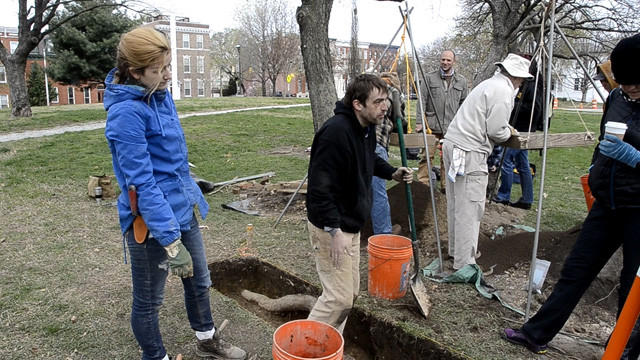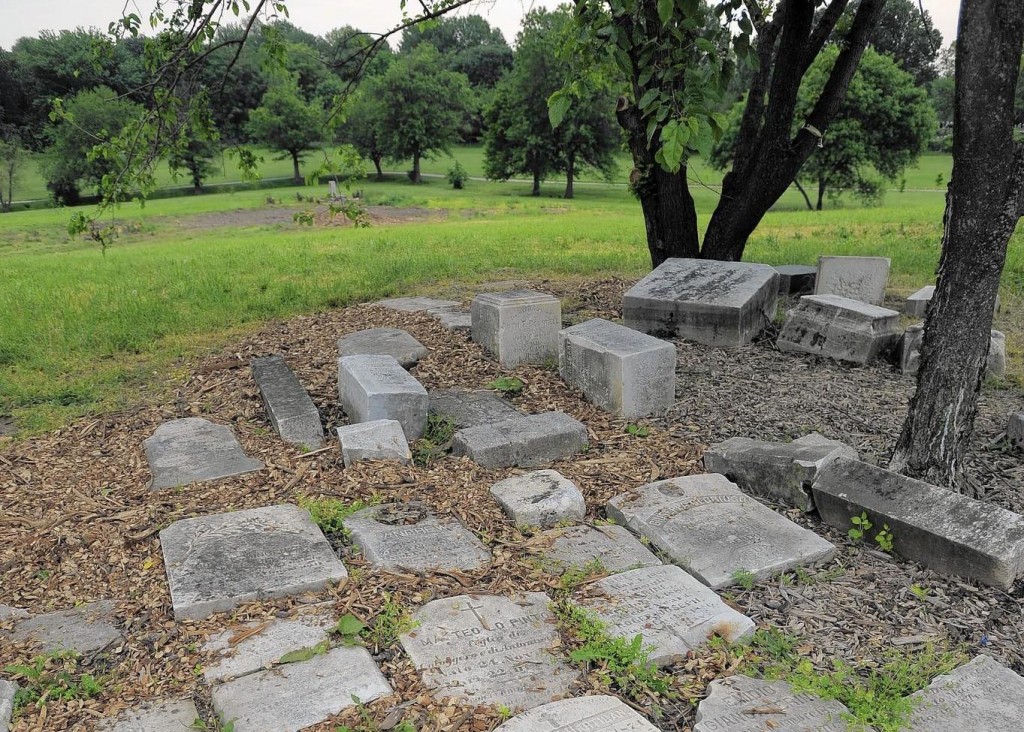Patterson Park dig uncovering traces of War of 1812 militia camp, defenses, Scott Dance, Baltimore Sun, April 20, 2014.
When Samuel Smith, major general of the Maryland militia, needed a headquarters to plot Baltimore’s defense from British invaders in the summer of 1814, archaeologists believe he called on the owner of a shop that gives Butcher’s Hill its name. Jacob Laudenslager leased much of what is Patterson Park today from landowner William Patterson, including a butcher’s shop steps from where the park’s iconic observatory sits today.
Archaeologists have uncovered a wall of that structure as they embark on a dig for a better understanding of what happened when thousands of militiamen camped along the hills of southeast Baltimore during the War of 1812. An excavation that began Wednesday has uncovered artifacts including bricks, mortar, glass, nails, shards of pottery and a gunflint — used to ignite gunpowder inside 19th century firearms.





